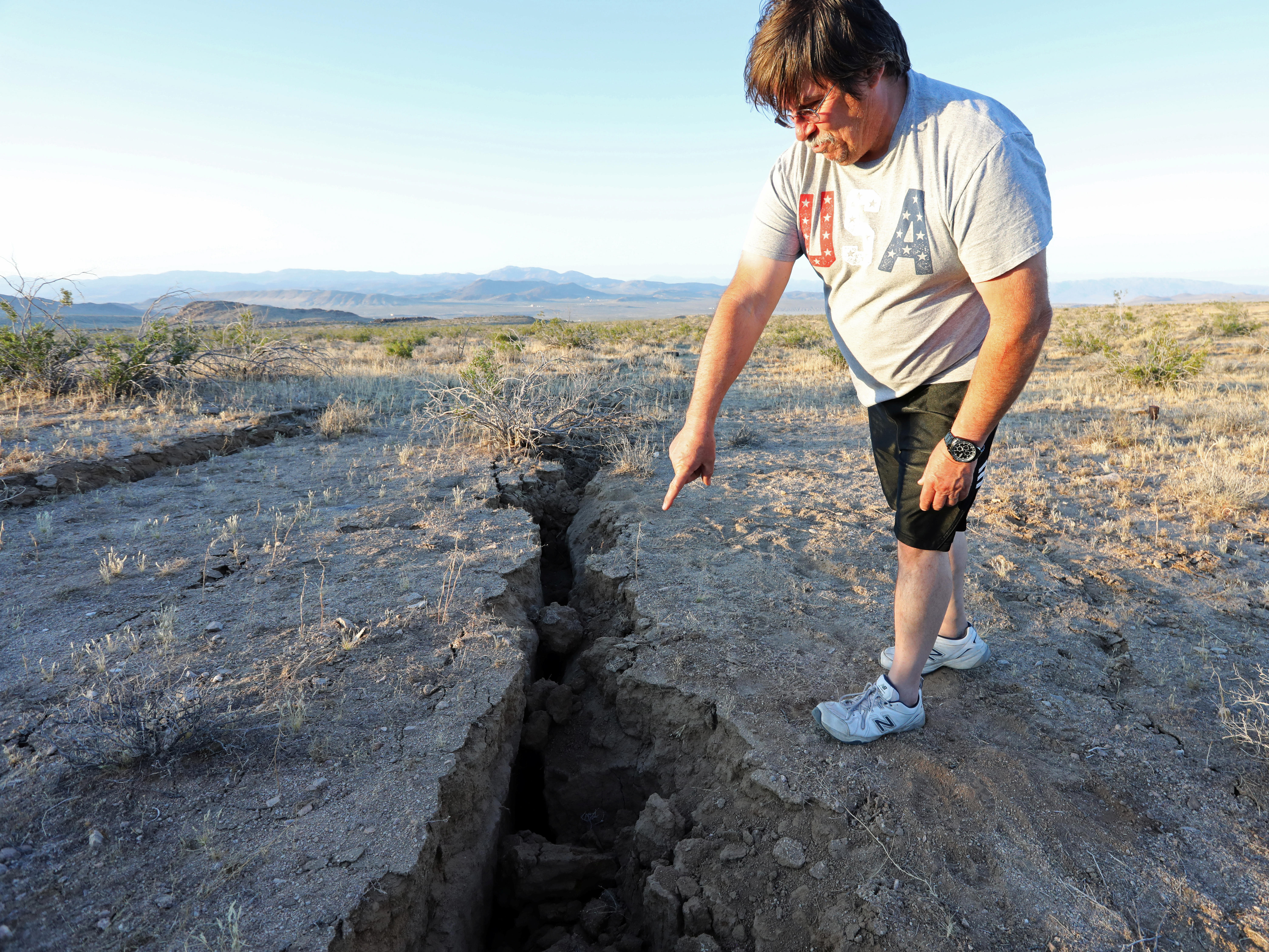
- Yesterday’s magnitude 6.4 earthquake in Ridgecrest, California, was the state’s biggest temblor since the 1989 Loma Prieta quake.
- It ended a five-year earthquake drought in the state.
- Scientists warn that Californians could see either another, larger quake, or at least severe aftershocks, in the coming days.
- Indeed, a magnitude 6 aftershock struck Ridgecrest this morning.
- Keeping tabs on California’s three major faults – the San Andreas, Hayward, and San Jacinto – is an ongoing challenge for seismologists.
- Visit Business Insider’s homepage for more stories.
On the Fourth of July, people from Los Angeles to Las Vegas felt the ground shake. Books fell off library shelves, trees collapsed, and cracks spidered through building walls and highway asphalt.
The magnitude 6.4 earthquake was centered in the California city of Ridgecrest, about 175 miles northeast of Long Beach. It ended a five-year drought in California’s seismic record: Before yesterday, the ground had not shook in the state since a magnitude 6 quake struck Napa in August 2014, causing $1 billion in damages.
No deaths have been reported from the recent quake, but injuries, fires, and infrastructure damage have kept emergency responders and local officials busy over the past 24 hours.
The earthquake was the state’s worst in 20 years, since the magnitude 6.9 Loma Prieta earthquake killed 63 people in 1989. But according to experts, the shaking may not be done yet.
Read more: California is having an unprecedented earthquake drought. The next big one could come at any moment.
"There is about a 1 in 20 chance that this location will be having an even bigger earthquake within the next few days," Lucy Jones, a seismologist from Caltech, told CBS News.
If not a second quake, people should expect aftershocks in the region to continue for quite some time, Jones added.
Why we experience aftershocks
After the initial quake, scientists forecasted an 80% chance of an aftershock with a magnitude of 5 or greater, according to the Los Angeles Times, and a 20% chance of an aftershock of magnitude 6 or greater. That warning proved correct.
This morning at 4:07 a.m. local time, the US Geological Survey (USGS) reported a magnitude 5.4 earthquake near Ridgecrest.
Earthquakes generally occur at the junction of two tectonic plates; those intersections are called faults. Sometimes, the plates push against each other, and so much force builds up that the two plates eventually slip past one another violently.
It's similar to what happens when you snap your fingers: Before the snap happens, you're pushing together your thumb and middle finger. Friction keeps your fingers from slipping for a while, until you apply enough force to overcome that friction. Then your thumb moves suddenly past you middle finger, making that snapping sound.

Not every point along a fault slips at once. So although stress between plates is relieved at the part of a fault that experienced movement in an earthquake, stress can go up in the spots that didn't shift, according to the geophysicist Mika McKinnon.
That leftover stress can trigger new quakes, better known as aftershocks - that's the fault's way to release remaining pent-up seismological stress.
"Earthquakes are all about redistributing stress," McKinnon tweeted. "Think of it like a puppy pile. As one pup moves, the others squirm around to get comfy. The bigger the puppy (higher magnitude quake), the more movement to reshuffle (more aftershocks)."
More quakes are coming in California
California sits on multiple faults. There's the San Andreas fault of 1906 San Francisco earthquake fame, the Hayward fault that bisects Oakland, and the San Jacinto fault in eastern Los Angeles. As a group, these three faults are responsible for most earthquakes that occur on the boundary between the North American and Pacific tectonic plates.
But an April study by USGS researchers showed that the state's three major faults have been unusually quiet over the past 100 years.
The Bay Area has experienced only three earthquakes of magnitude 6 or greater since San Francisco's 1906 quake (which had a magnitude of 7.8), according to the LA Times. But in the 75 years before that, there were 14 seismic events of magnitude 6 or greater.
The state as a whole has seen 12 earthquakes of magnitude 6 or higher since 1995, but during the 25 years before then, California experienced 32 quakes above that threshold.
This stark contrast means, experts say, means the other shoe will have to drop sometime soon.

"We know these big faults have to carry most of the motion in California, and sooner or later they have to slip," Glenn Biasi, a coauthor of the USGS study, said in a press release. "The only questions are how they're going to let go and when."
The location of this most recent quake aside, seismologists generally agree that the Hayward fault along the eastern side of the San Francisco Bay is likely to see movement in the near future. A 2016 USGS report suggested there's a 30% chance that the Hayward fault will experience a magnitude 6.7 or greater quake within 30 years.
"Most earthquake geologists rarely use that language about 'being overdue,' but we all agree," Chris Goldfinger, a paleoseismologist at Oregon State University, previously told Business Insider.
But making forecasts about California's mess of faults is challenging, Goldfinger added.
"It's like a game of Russian roulette, except the gun has 100 chambers rather than six, and several dozen guns instead of just one," he said.

